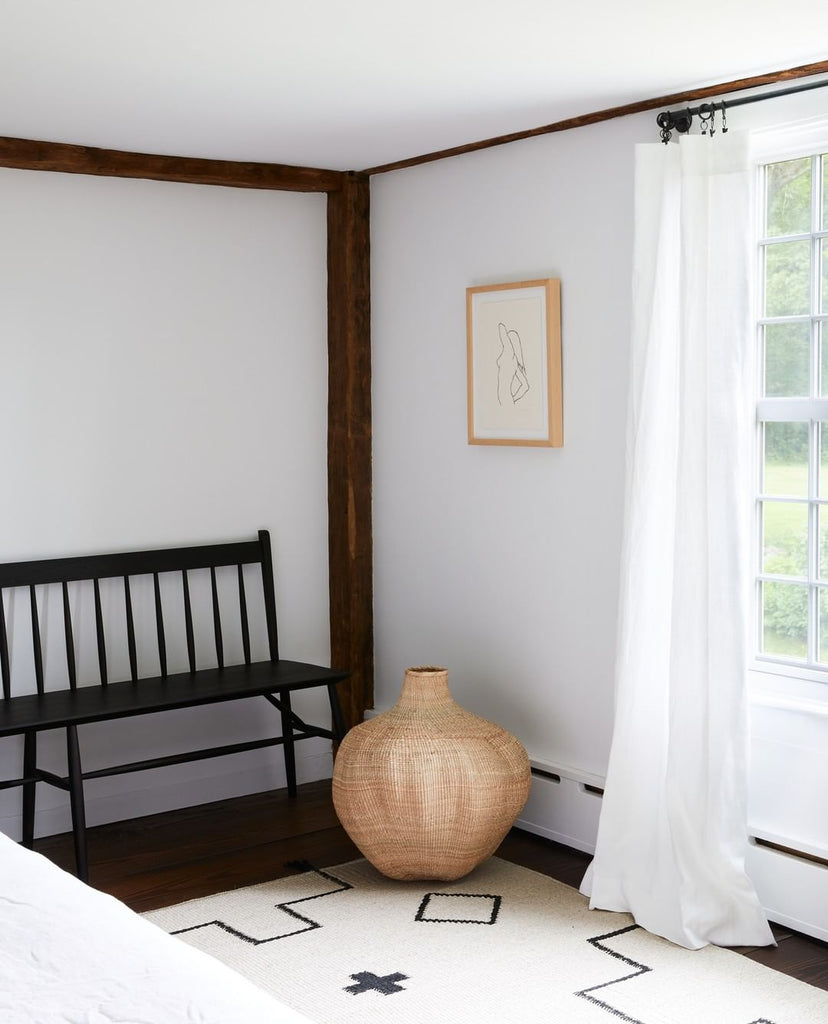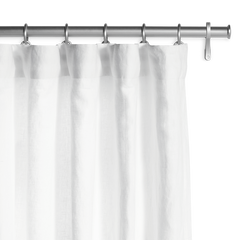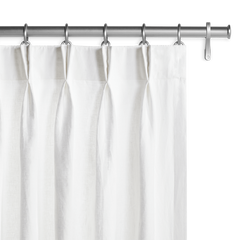It's pretty common to hear curtains and drapes used interchangeably. But not all window treatments are created equal, and there are actually some major distinctions between curtains and drapes. Here's a break down the differences—and similarities—between curtains and drapes. Read ahead for an explainer.

Image by @nicole_franzen via @barnandwillow
1. What Makes Drapes Different From Curtains
Traditionally sold by the panel, drapes are typically made from thicker fabrics and lined to block out sunlight. Unlike curtains:
- Drapes are designed to be a higher-quality looking aesthetic.
- Drapes are often constructed of denser fabrics, making them more voluptuous in appearance.
- Drapes are traditionally longer than standard sets of curtains, often extending to the floor.
- Drapes usually have linings, which give them structure and help control incoming light.
- Drapes can be steam cleaned while most curtains are not steam-proof.
2. What Makes Curtains Different From Drapes
Typically sold in standard pairs, curtains are usually lightweight and designed to extend to the windowsill, or just above floor length. They’re different than drapes because:
- Curtains often don’t have linings, although they can be composed of room darkening or blackout fabrics themselves.
- Curtains are traditionally made from lighter fabrics than drapes.
- Curtains are frequently paired with blinds or shades for extra light blockage.
3. Similarities Between Curtains and Drapes
- Both curtains and drapes can be hung from rods with or without rings.
- Both curtains and drapes are available in an assortment of different lengths and widths.
- Both curtains and drapes come in various top construction styles, including pinch pleats and tie-tops.
- Both curtains and drapes can be styled to allow more sunlight into a room, with decorative tie-backs etc.














